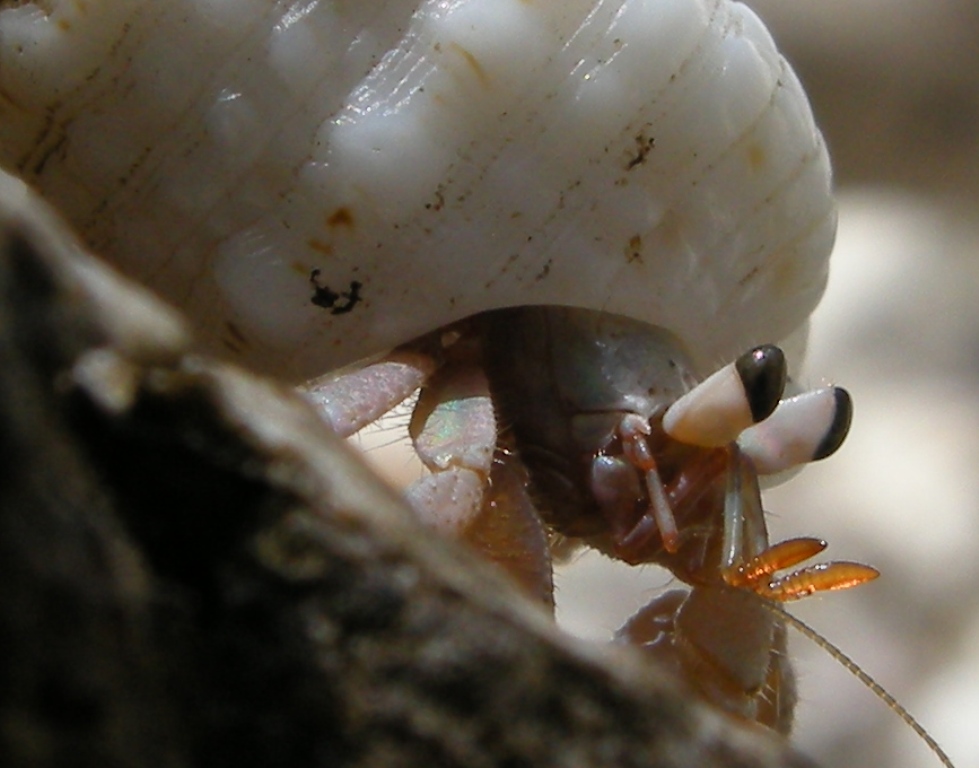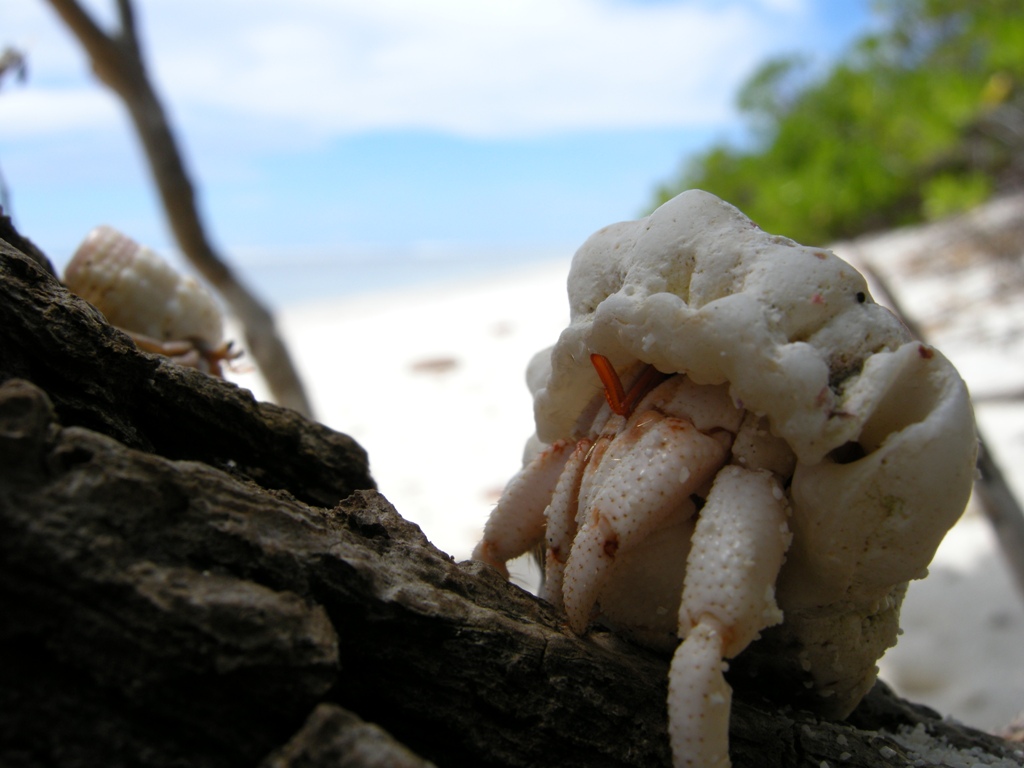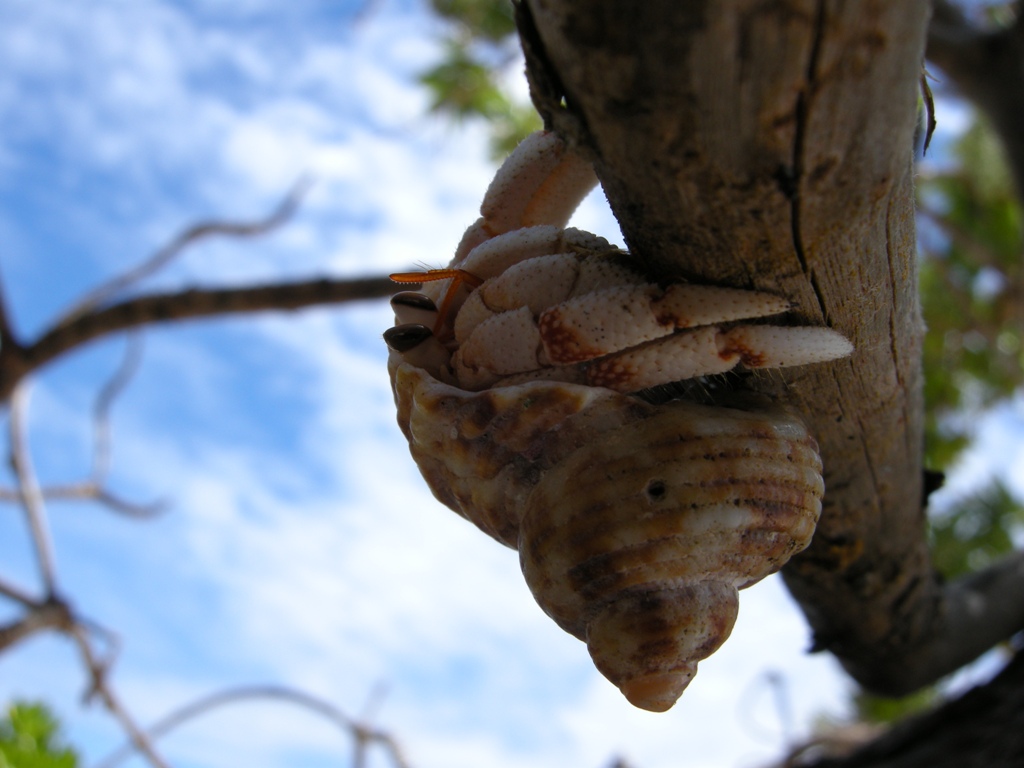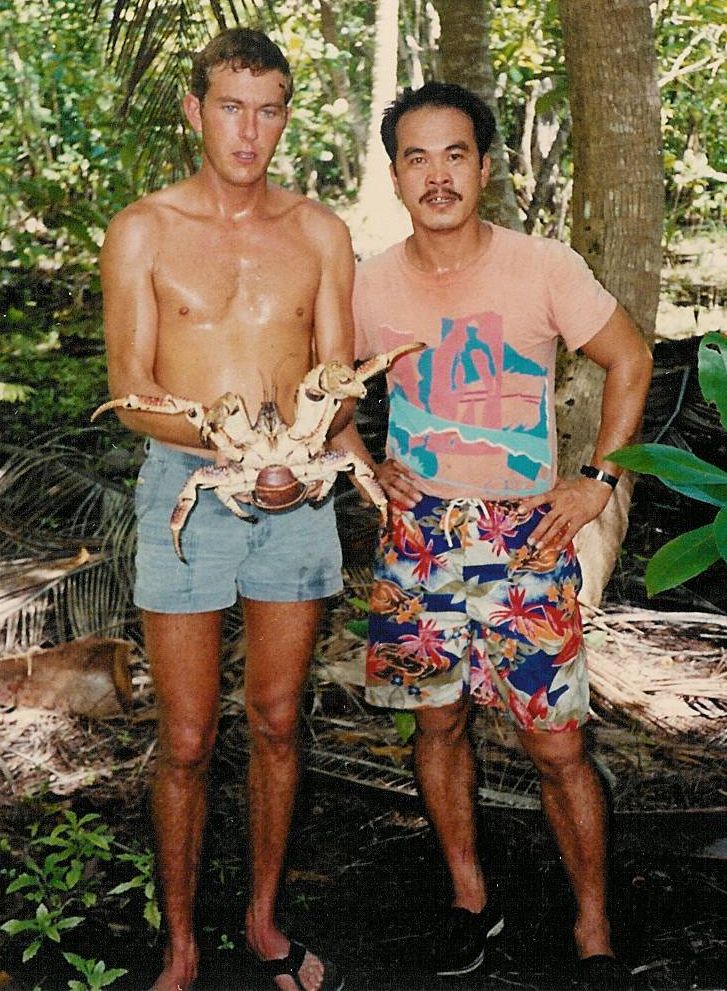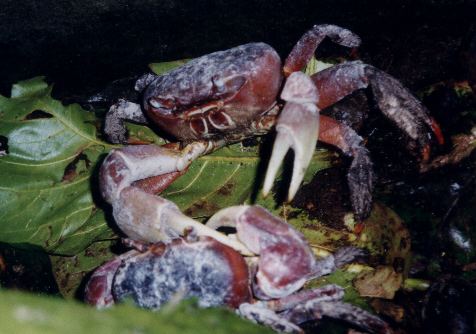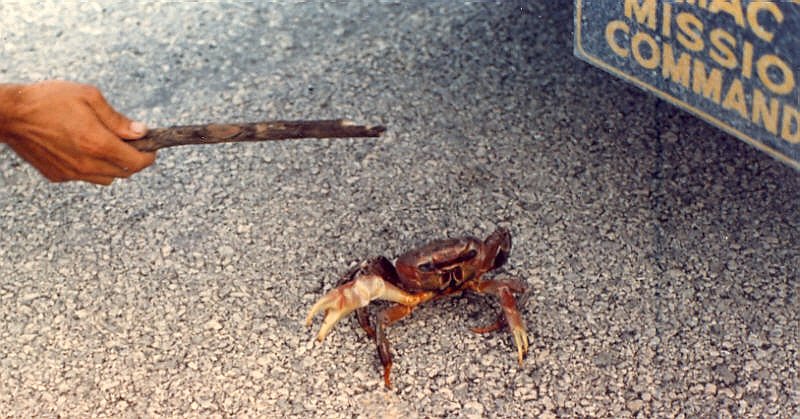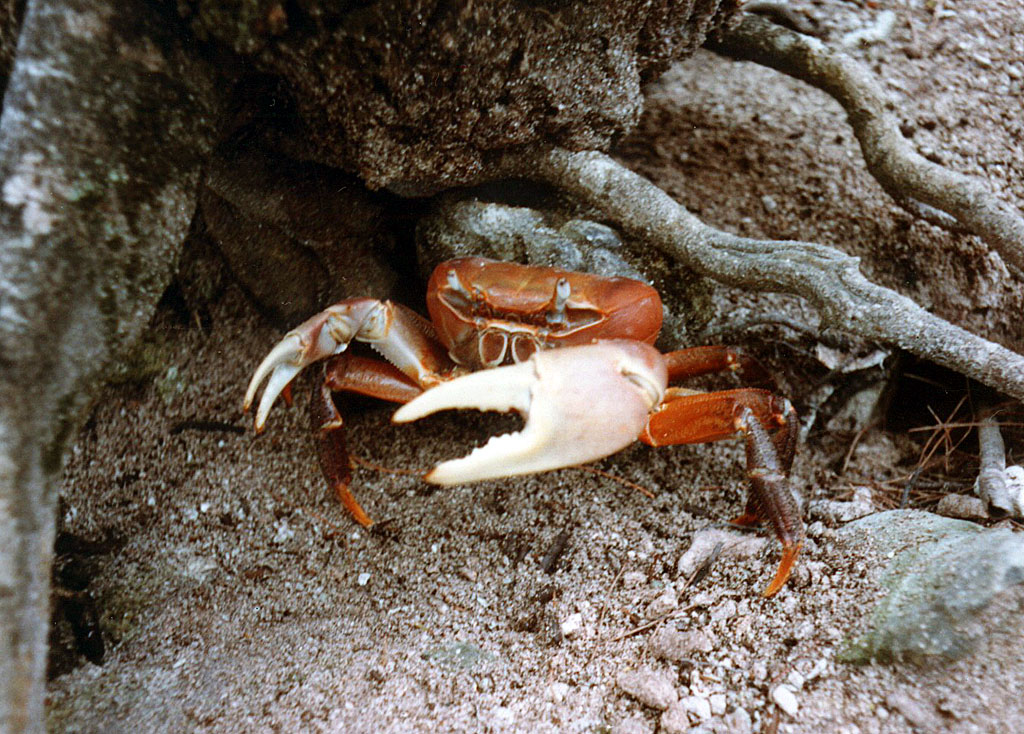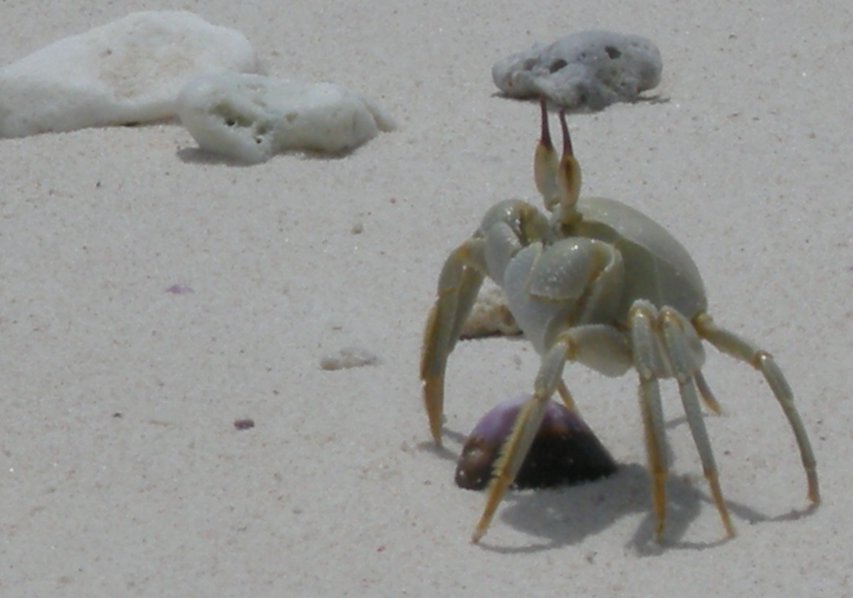CRABS:
One
of
the most enduring nightmares of Diego Garcia are the
tales of what happens if you were foolish or drunk
enough to fall asleep in the jungle - You WOULD be
eaten by crabs. The photos that follow are of
Coconut Crabs (also called Robber Crabs, but not by
anyone I ever met on Diego), hermit crabs, and
the ubiquitous land crabs.
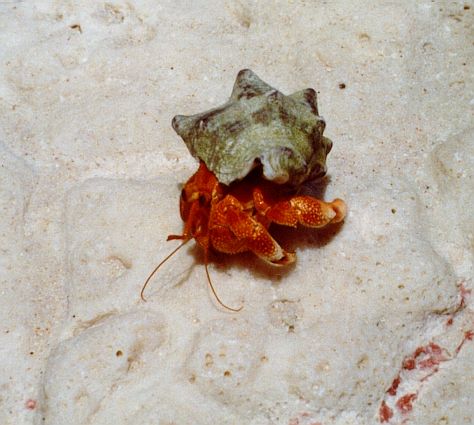
Can you tell
the difference between a Hermit Crab and a baby
Coconut Crab?
I couldn't! Above is an adult Orange
Hermit Crab (Coenobia perlatus)
For a really good site about identifying Hermit
Crabs, see http://www.tonycoenobita.com/species_analysis_eng.htm
If you can
tell the difference, or even if you can't, send
me
your pictures of Hermit Crabs on Diego,
o.k.?

COCONUT
CRABS
(Birgus latro)
Let's
face it. Even though those red Land Crabs
were everywhere and we saw them all the time, it
was the legendary Coconut Crabs that fascinated
everybody. Coconut Crabs evolved in the
Indian Ocean region, probably right there in the
Chagos (during the last ice age, there were 5,000
square miles of land in the Chagos - compared to 5
today, so they had lots of room).
Based on mitochondrial DNA studies, it appears
that they spread into the Pacific Ocean region
during the last ice age. They live in
tropical regions, or areas washed by tropical
currents (i.e., they live on Okinawa - where they
are often captured and sold as pets in
Tokyo).
Almost
everywhere they live, they are considered a
delicacy by the natives, and reportedly taste very
much like lobster. They were eaten by the
workers on Diego Garcia in the plantation days and
by the Navy folks back in the 1970s and early
1980s. In some places throughout their range
they are disappearing, but in many places where
they live, there are legal protections. For
example, on Guam there are minimum size limits for
taking, and females with eggs cannot be
killed.
It is
reliably reported that Coconut Crabs are absent
from cultivated areas with livestock (cows, pigs,
etc.) and as the various tropical islands are
developed to feed their growing populations, it is
likely that the crabs will disappear from some of
the islands where they now exist. Because
they take so long to mature, it is easy for a
hungry human population to eat every adolescent
and adult crab on an island, resulting in
extinction of that population. This is
believed to be what happened in Indonesia, the
Seychelles, and various Pacific Islands.
However, it did not happen in the Chagos or on
Diego Garcia. Even so, the number of Coconut
Crabs on the islands in the Chagos varies widely
from overabundant to scarce. In fact, it is
believed that the east arm of the Diego Garcia
atoll now has the most dense population of Birgus
latro anywhere in the world, thanks to the the
current protection measures in place.
Coconut Crabs will not disappear from the Chagos
in the foreseeable future.
The
first Coconut Crab I ever saw on Diego Garcia was
a stuffed one on the Brit Rep's mantle. It
looked like a giant hermit crab with a lobster's
tail. It is my recollection that coconut
crabs were completely absent from the airfield to
downtown when I was first assigned to DG back in
1982. By 1987 they were completely
protected, though I never saw a live one in the
main base area. There were plenty of
juveniles - juvenile Coconut Crabs look and act
pretty much like 'hermit crabs' - and you could
see those all over the beaches on both the ocean
side and lagoon side. Today (2008) adults
are seen around the main base quite regularly, so
it appears the conservation measures are working.
They are
amongst the largest terrestrial arthropods, with
reliable reports giving an adult weight of 10
pounds, and a leg span of about 3 feet. Some
unconfirmed reports have these crabs weighing over
35 pounds and having a leg span of about 10
feet. I don't remember anyone making those
kinds of claims on DG, although 10 pounders are
now seen frequently as you can tell from the
photos below.
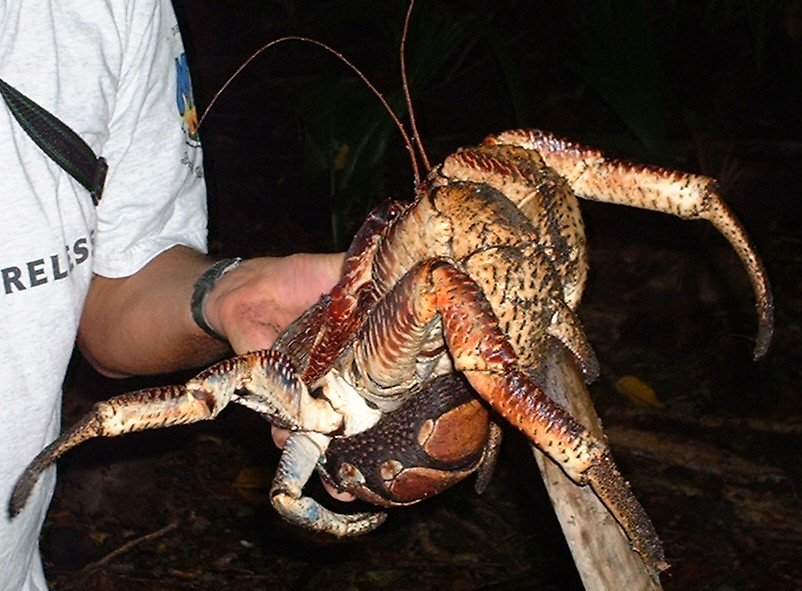
Female Coconut
Crab showing developing eggs glued to
abdomen. Photo by Bob Ralph
The
female Coconut Crab carries her eggs glued to her
abdomen for a couple months, then lays her eggs at
high tide, at night, in the ocean, and the eggs
hatch immediately. Some say they lay the
eggs individually when they are ready, and other
reports say ALL the female crabs on a given island
will lay their eggs on the same night, but only
once a year.
The
larvae stay in the water, swimming near the
surface, for about a month, and then sink to the
bottom and spend another month or so in the water
and on the beach, and then move up on the beach
permanently. During all this, they act just
like their close cousins, the Hermit Crabs.
In fact, many of the 'hermit crabs' on the beaches
of Diego are in fact juvenile Coconut Crabs.
After
about 6 months, they grow large enough to graduate
from 'juvenile' to 'adolescent', and leave the
beaches and head inland, sometimes using empty
coconuts as 'shells'. However, this is not
why they are called Coconut Crabs - instead it's
because they are the only creatures in creation
that open and eat Coconuts! As they grow,
they'll use whatever they can find to continue to
protect their soft abdomen, and if there's nothing
big enough, they'll dig holes in the ground and
plug the hole with a dirt clod or rock.
Eventually,
adolescent
Coconut Crabs become too big to use any readily
available thing for a 'shell' and their outer
shell hardens, and they wander around with their
tails curled underneath (to protect to bottom
side, which remains relatively soft). When
they aren't out looking for food or companionship,
they hide in cracks in the rocks, burrows in the
ground, or holes in trees.
Reports
vary about how long they live; they have not yet
been raised successfully in captivity, nor has a
long-term tagging program been done, so there's no
'Sea World' type record to compare with crabs in
the wild. Some say they live about 30 years,
some say 60. They have to moult their shells
as they grow, and there is data about this that
shows they gain about 3% in weight with each
moult, but that the moults only happen every 6
months or so. The most repeated age in
the literature for 'adulthood' (meaning they're
sexually mature) is about 5 years.
Although
they have rudimentary gills, these aren't very
functional and adult Coconut Crabs will drown in
water. They have a special breathing organ, sort
of an intermediate step between gills and lungs,
which must be kept moist. So they are
observed drinking often. They lift the water
to their mouths just like they do food, but also
use their 10th, almost tiny, set of legs to clean
these breathing organs and keep them moist.
They can drink salt or fresh water.
They
locate their food by smell and can sniff out
rotting meat or fruit from long distances.
They'll eat just about anything that's organic,
and have been know to catch and eat newly hatched
sea turtles, and inquisitive rats. They will
guard a food source as adults, will steal food
from other Coconut Crabs, and are widely known to
carry food back to their holes. They get the
name Robber Crab from these practices.
Adult
Coconut Crabs typically come out of their burrows
and holes at night, when their only known predator
(humans) aren't out and about. They sense
human presence by vibrations through the ground,
and if there is not too much disturbance they do
come out during the day, especially if it's wet
(like during the monsoon) so they can keep their
breathing organs moist.
Since
they eat anything that's dead or too slow to
escape, there is a downside to having too many of
these crabs around - they will seek out and eat
the eggs and chicks of birds, especially those
that nest on the ground. So on Diego, where
there are efforts to restore the sea-bird
colonies, it might be wise to establish some
'population control plan' for Coconut Crabs in
those areas where the birds are nesting.
Mmmmmm... I can almost taste the 'lobster' now...
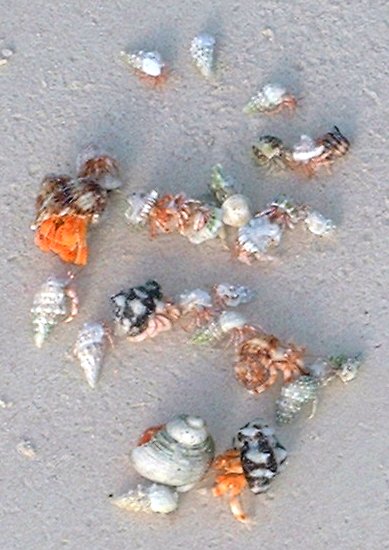
Above:
Juvenile Coconut Crabs on the sea-ward beach,
2002.
FINDING
COCONUT CRABS:
If you
want to see adult Coconut Crabs on Diego Garcia,
it's pretty easy. Find a secluded spot
with the potential for holes and burrows
(somewhere in the jungle), and just sit quietly
for about 15 minutes at night. If there
are any Coconut Crabs around, they'll start to
move about after they're convinced you aren't
there anymore. Shine your flashlight at
the sound, and you'll be rewarded. By the
way, that same technique works for the Land
Crabs, although there are enough of them
squished on DG1 that you don't really need to
seek them out.
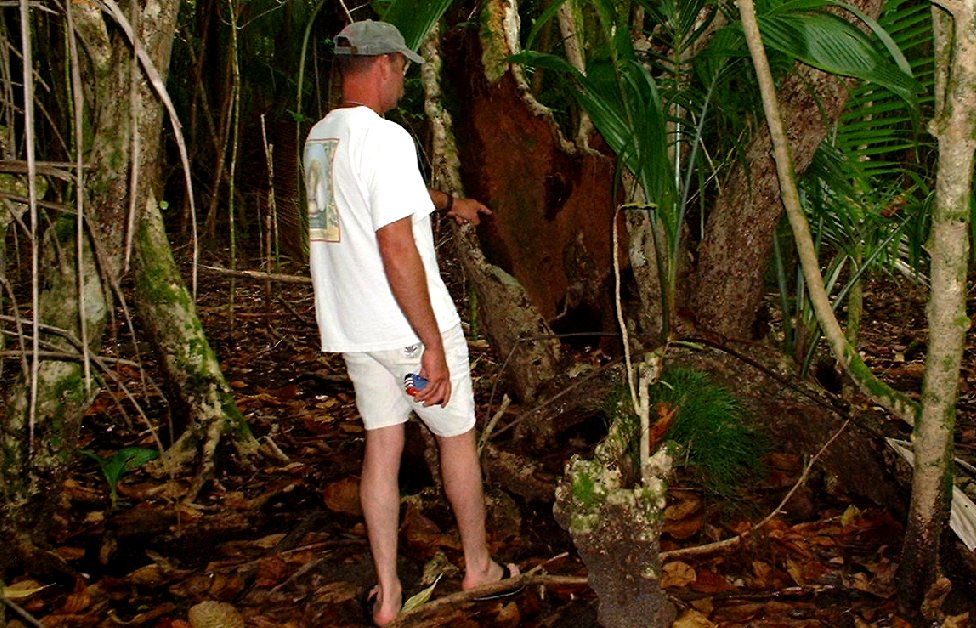
Above:
Typical Coconut Crab habitat and a hiding place
- in the rotted trunk of an old tree.
Photo by Bob Ralph.
Below - the
crab that was in that hole:
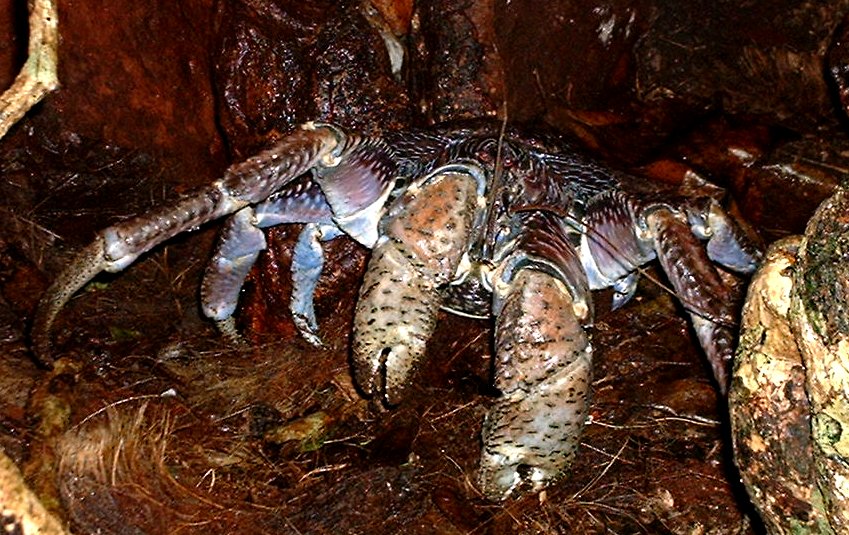
Below:
The easiest way to find Coconut Crabs - they
(foolishly) wander the highways!
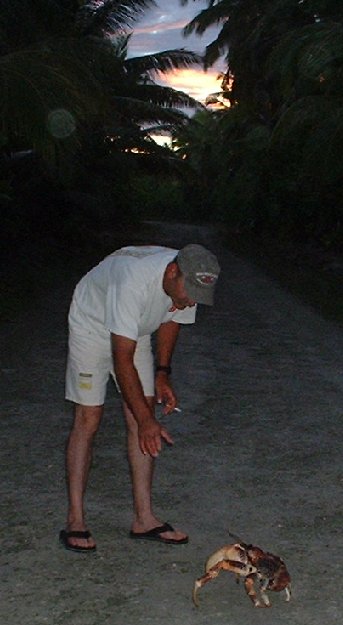

One last note of
caution: Never get drunk and
pass out in the jungle...
Unless
You Want to Meet the
Adult Coconut Crabs of Diego Garcia:
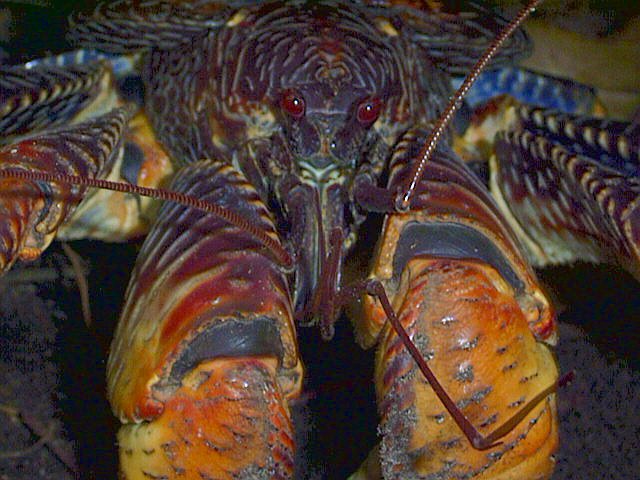
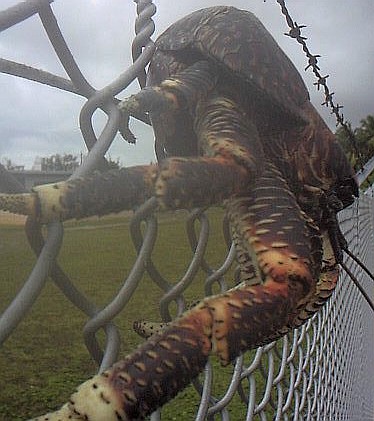
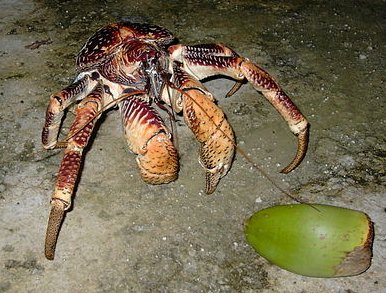
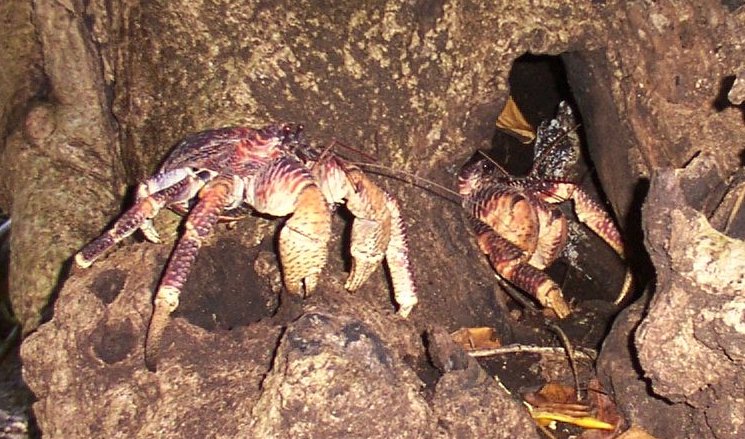
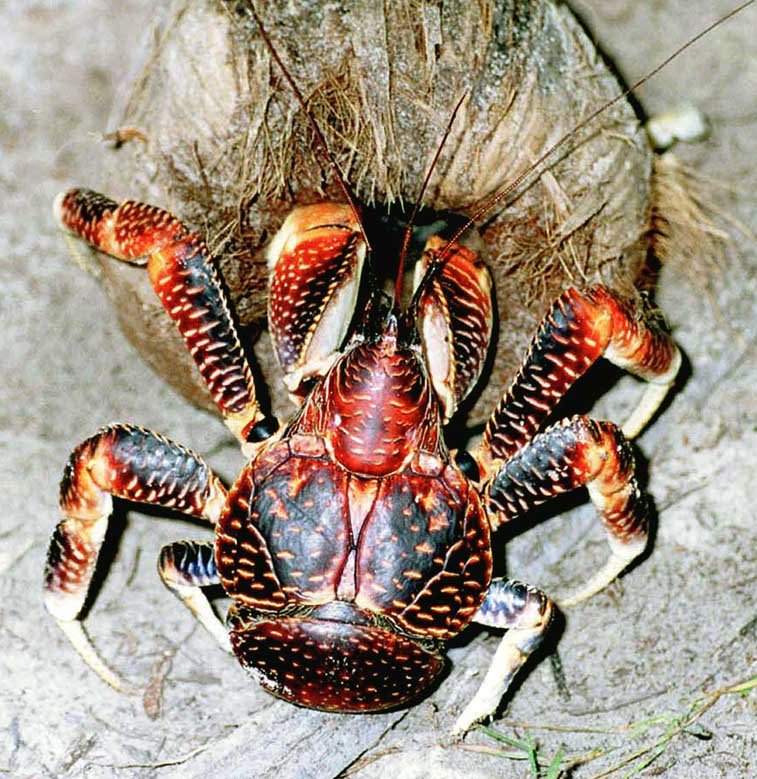
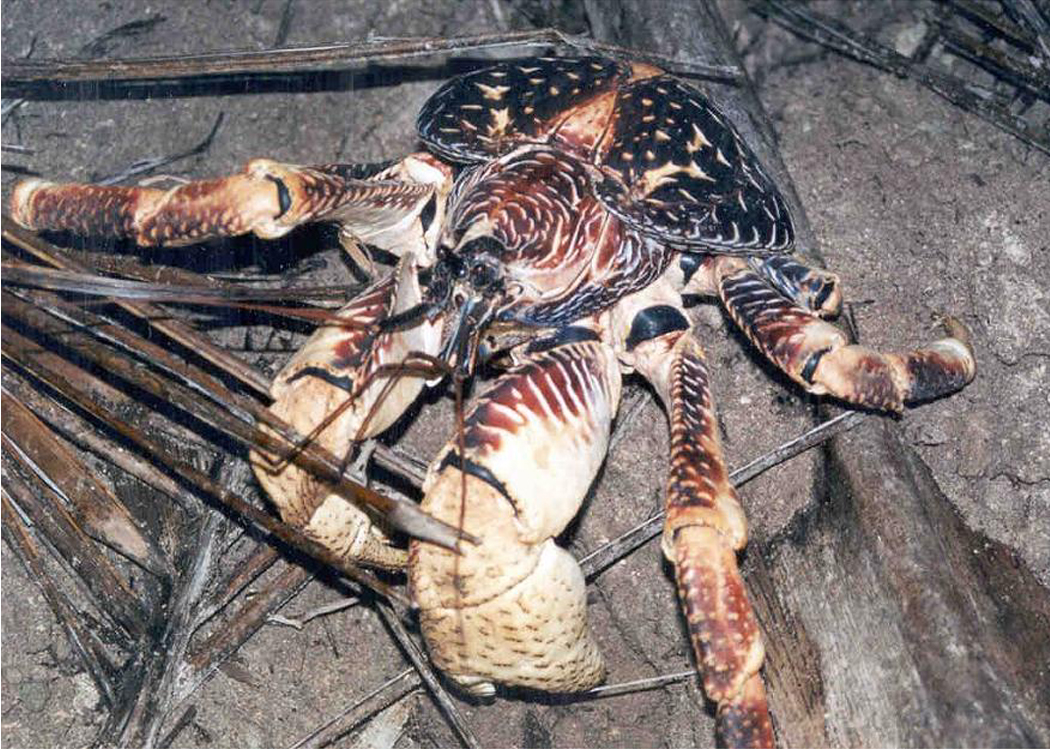

HERMIT
CRABS!
Below:
Another adult Orange Hermit Crab (Coenobita
perlatus), showing the fine hairs that they
use to sense vibrations in the ground, and
also act as hair triggers for closing their
pincers when they are touched.

Below
left is an Indonesian Hermit Crab (Coenobita
brevimanus).
The one in the old gear is probably a Calico
Hermit Crab (Coenobita variablis), which are
normally found on the beaches of Australia.
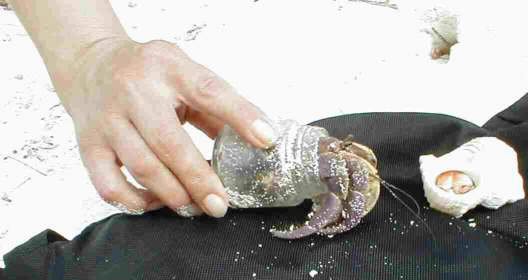
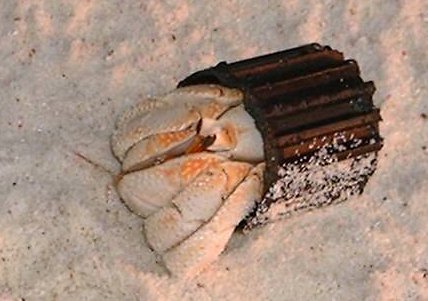
Below: Here're some photos by
James Cox, taken Christmas Day 2007.
The top one is an Indonesian Hermit
Crab. Not sure about the other two, but
they look like Calico Hermit Crabs.
